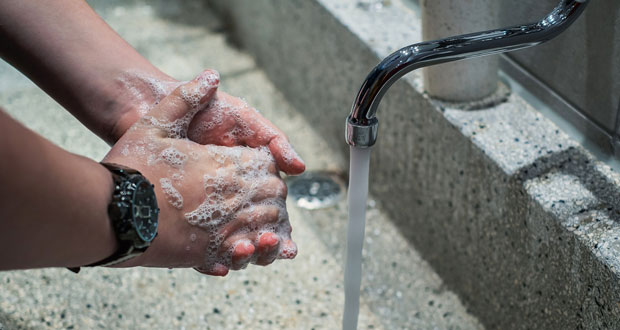A YouGov survey commissioned in September by SC Johnson Professional to coincide with Global Handwashing Day, which took place on 15 October has found that hygiene standards in public facilities and workplaces may not be meeting user expectations. Furthermore, it was found that most people still prefer to see visible hand hygiene provision in entrances to public spaces. The results also revealed that people are now less likely to greet with a handshake, hug or kiss than before the pandemic.
Building on the Global Handwashing Day’s theme of ‘Uniting for Universal Hand Hygiene’, SC Johnson Professional set out to investigate these opinions on key hygiene issues when away from home in workplaces and public places. They commissioned YouGov to survey a representative sample of adults in three European countries with a total of 5,357 respondents from the UK, Germany and France.
Hygiene in public spaces – are expectations being met?
Forty-eight per cent of the survey’s respondents felt concern that hygiene standards in public buildings and workplaces were not as good as they should be, with only 12 per cent stating that they were not at all concerned. When splitting by country, 42 per cent of respondents in Germany expressed concern, rising to 51 per cent in France and 52 per cent in the UK.
Furthermore, over half of respondents stated that they still preferred to see hand sanitiser available at the entrances of public buildings and workplaces today. On average, 56 per cent of all respondents preferred to see it available, with 50 per cent of adults preferring this in Germany, rising to 58 per cent in the UK and 63 per cent in France.
Along with masks and social distancing, the appearance of hand sanitiser was one of the most visible changes seen during the pandemic; they could be found at key locations in many public buildings. It is clear from the results that many people still would like to see hand sanitiser in public spaces in a post-pandemic world. These results shine a spotlight on the need for actions to be taken by facility and building managers to help people feel more confident that hygiene standards do meet their expectations.
Meet and greet: Almost 1 in 2 people have changed their behaviour
The same survey uncovered that the pandemic has reshaped how likely people are to greet each other physically. Overall, 45 per cent of adults are now less likely to greet someone with a handshake, hug or kiss; this finding was mirrored closely across the three countries surveyed (UK 44 per cent, France 47 per cent, Germany 46 per cent).
Greetings vary widely over history and across cultures, but a common theme is proximity and physical contact. These findings suggest that respondents feel ongoing caution around this proximity and contact and have changed their behaviour as a consequence. Visible reassurance of hygiene standards, for example by the presence of sanitiser at entrances to public spaces, may help people feel more confident with respect to greeting contact in the way they would have before the pandemic.
Age is a factor
The results revealed that a respondent’s age also affects their view of hygiene. Younger age groups expressed concern that hygiene standards were not as good as they should be in public buildings and workplaces (18-24, 39 per cent), but as age increased, this perception rose to 54 per cent of 55s and over. Not only that, but older age groups were more likely to prefer sanitiser to be present at the entrance to buildings and workplaces (63 per cent versus 45 per cent of 18-24 year olds) and are now less likely to greet with a hug, kiss or handshake (52 per cent are less likely compared to 36 per cent of 18-24 year olds).
Targeted Hygiene: taking action in public spaces
Dr John Hines, SC Johnson Professional’s Global RD&E Director, commented on the survey results: “This survey demonstrates that hygiene awareness, and expectations for availability of hygiene products, remains high. As individuals, improving hand hygiene behaviour is one easy way to reduce the risk of infections and help create healthy places. Taking simple actions such as sanitising hands when entering a public building, or after touching common surfaces, for example, can make a huge difference.
“We urge building owners, managers and users to keep hand hygiene high on the agenda and to keep driving good hygiene behaviour. For example, continuing to provide hand sanitiser at entrances helps address one of the key moments of risk of transmission of germs. Our Targeted Hygiene Programme has been created to help enable building owners and managers to target all eight key moments where this risk of germ transmission is highest and to raise awareness of how promoting good hygiene practice at these moments can help create safer spaces.”
Find out more about SC Johnson Professional’s Targeted Hygiene Programme here.





